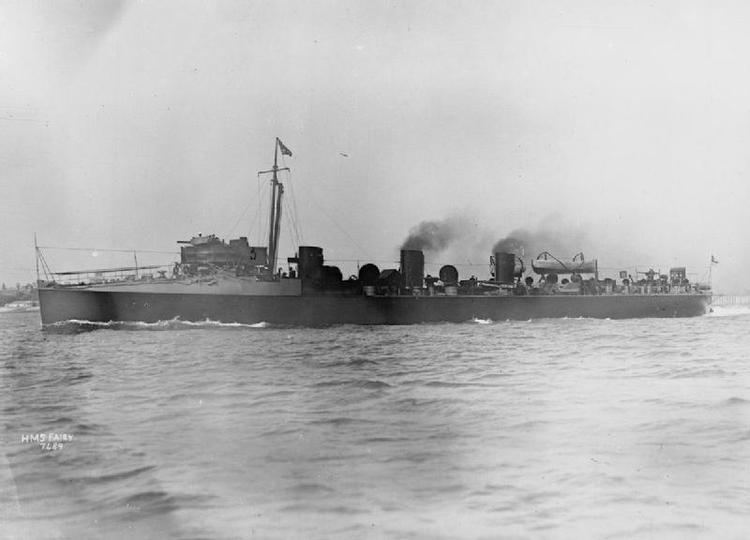Name HMS Gipsy Yard number 395 Commissioned July 1898 Launched 9 March 1897 | Cost £54,363 Laid down 1 October 1896 Construction started 1 October 1896 Draft 2.49 m | |
 | ||
Ordered 1896 – 1897 Naval Estimates Builder Fairfield Shipbuilding and Engineering Company | ||
HMS Gipsy was a Fairfield-built three-funnel, 30 knot torpedo boat destroyer ordered by the Royal Navy under the 1896 – 1897 Naval Estimates. She was the fourth ship to carry this name. Designated as a C-class destroyer in 1913, Gipsy served on patrol in the First World War operating out of Dover. She was sold for breaking in 1921.
Contents
Construction
An invitation to tender was sent out on 5 October 1895. She was laid down as yard no 395 on 1 October 1896 at the Fairfield Shipbuilding and Engineering Company shipyard at Govan, Glasgow and launched on 9 March 1897. During her builder’s trials she made her contracted speed requirement. She was completed and accepted by the Royal Navy in July 1898.
Pre-war
In April 1901 she was commissioned at Devonport dockyard by Lieutenant and Commander H L Wells to take the place of HMS Seal in the dockyard's instructional flotilla. Lieutenant John Gilbert de O. Coke was appointed in command in March 1902, when she was replaced in the flotilla. She was re-commissioned by Commander William George Elmhirst Ruck-Keene and the crew of the HMS Vixen on 31 July 1902, and replaced the latter ship in the instructional flotilla.
On 30 August 1912 the Admiralty directed that all destroyer classes were to be designated by alphabetic characters; the first being 'A'. Since her design speed was 30-knots and she had three funnels she was assigned to the C class along with similar ships from other builders. After 30 September 1913, she was known as a C-class destroyer and had the letter ‘C’ painted on the hull below the bridge area and on either the fore or aft funnel.
World War I
From August 1914 to November 1918 she was deployed in the 6th Destroyer Flotilla based at Dover. While employed with the 6th Flotilla she conducted counter-mining patrols, escorted merchant ships and patrolled in defence of the Dover Barrage.
On 24 November 1917 the German submarine U-48 ran aground on the Goodwin Sands and was caught by British patrol craft including Gipsy and five drifters. After a brief exchange of gunfire, the crew of U-48 set off scuttling charges. U-48 suffered 19 dead with 17 survivors rescued by the British. On the night of 19/20 December 1917, the German submarine UB-56 struck a mine while trying to pass submerged westbound through the Dover Barrage. Gipsy picked up a single survivor from the submarine who died shortly afterwards. Gipsy was awarded the battle honour "Belgian Coast 1914 – 17" for her service.
Fate
In 1919 Gipsy was paid off and laid-up in reserve awaiting disposal. She was sold on 17 March 1921 to C.A. Beard of Teignmouth for breaking. Her hull was used as a pontoon for a jetty at Dartmouth and was still in use as late as 1972.
